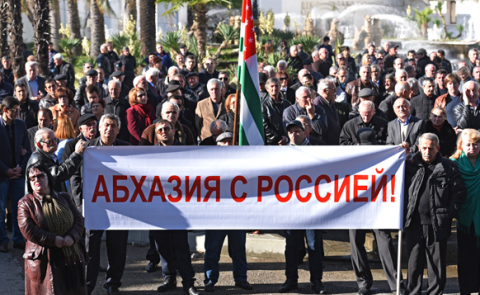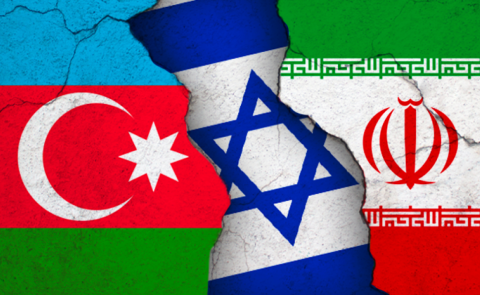
Navigating the Path Ahead: The Evolving Dynamics of Russian Peacekeeping in Karabakh

After the peace declaration of November 10, 2020, which marked the conclusion of the 44-day conflict between Armenia and Azerbaijan, Russia assumed a pivotal role in the peace negotiation process as well as the formulation of the peace proposal. An integral component of this negotiated settlement was Russia's authorization to deploy its peacekeeping forces to the region, a commitment that was initially established for five years while incorporating the potential for an extension of this temporal framework with the approval of Armenia and Azerbaijan. Following the provisions articulated in the peace agreement and subsequent diplomatic interactions, a total of 1,960 peacekeepers were dispatched to the Karabakh region. The primary mandate of the peacekeepers was to ensure the maintenance of tranquillity in the area, safeguard the welfare of the local Armenian population, and facilitate the ongoing dialogue between Baku and Yerevan pertaining to the eventual determination of Karabakh's future.
A new group of Russian troops returned to the country's borders about three decades after the Russian military withdrew from Azerbaijan at the request of the Abulfaz Elchibey-led Azerbaijani government. However, this time, their deployment was characterized by distinct objectives and responsibilities. The presence of these unwelcome guests triggered protracted and comprehensive debates within the realm of domestic politics. Certain opposition parties in Azerbaijan, in particular, censured the government for permitting the stationing of Russian troops in the Karabakh region. Their primary concern was the potential amplification of the Kremlin's influence over the strategic decisions made by the official government in Baku. Furthermore, they argued that this development could potentially curtail the maneuverability of Azerbaijan's foreign policy tools.
Azerbaijan's recent military operation in the Karabakh region, which compelled the de facto government to dissolve itself, culminating in the displacement of nearly 100,000 Karabakh Armenians from the region, has engendered a transformed security landscape in the region. Consequently, the ongoing debate surrounding the presence of Russian military forces in the region has intensified, prompting increased scrutiny and apprehension within state-sanctioned media outlets and among government officials. Prior to the recent military operation, Ilham Aliyev, the President of Azerbaijan, had consistently emphasized the temporary nature of the Russian troops' presence within Azerbaijani territory. This perspective was also subject to discussions with Armenia. However, following the 23-hour military clashes, a perceptible shift has occurred in the characterization of this issue. It is now regarded as a predominantly bilateral matter between Azerbaijan and Russia, largely sidelining Yerevan's involvement, as reaffirmed on multiple occasions by Russian officials. The confluence of these developments has, therefore, introduced a new dimension to the ongoing discourse surrounding the Russian military presence in the Karabakh region, warranting comprehensive analysis and scrutiny in the context of the shifting security dynamics in the South Caucasus.
The precarious situation surrounding the role of Russian peacekeepers in the Karabakh region following the events in September, coupled with persistent efforts from the Armenian side to attribute blame to the Russian side and the Kremlin for the perceived ineffectiveness of the peacekeeping mission, has prompted the exploration of various scenarios. Which scenarios can be considered concerning the recent situation in the region and the future of the Russian contingent?
During the Second Karabakh War, a significant number of Armenian residents in the Karabakh region, anxious about Azerbaijani forces regaining control over Nagorno-Karabakh and seven surrounding districts, departed from the area, fearing for their safety and livelihoods. However, the arrival of Russian peacekeepers following the conclusion of the 44-day conflict provided a semblance of security to Karabakh Armenians, who harbored the expectation that these Russian troops would safeguard them from any potential threats emanating from Azerbaijan while also facilitating the rebuilding of their lives in the region. After living under the security umbrella of the peacekeeping mission for a period of three years, the Karabakh Armenians found themselves caught up in yet another war, albeit of significantly shorter duration, lasting a mere 23 hours. This abrupt and unexpected turn of events prompted a new exodus of the local population from the region. The newly emergent situation posed a substantial challenge to the role of the peacekeepers and the responsibilities of the mission, which had been affirmed by Armenia and Azerbaijan in 2020. In the aftermath of this rapid development, it was evident that there were barely any ethnic Armenians left to be shielded from various forms of threats. A recent report from the United Nations indicated that only up to 1,000 ethnic Armenians remained in Karabakh as of October. The dwindling Armenian population in the region underscored the necessity for the Kremlin to reevaluate the role and responsibilities of the peacekeepers if they sought to maintain their presence in the area. This shift in circumstances required a rethinking of the mission's mandate, objectives, and the nature of its engagement with the parties involved, as it became imperative to adapt to the new demographic and security realities in Karabakh.
The first option for Putin's government would be the return of the Karabakh Armenians to the region with new promises of safe life and protection by the Russian contingent and integration into Azerbaijan. Russian officials have actively encouraged Armenians who had fled to Karabakh following the armed conflict, and some even as far as Moscow, to return to Karabakh. The Kremlin's rationale is that the presence of peacekeeping forces remains essential to safeguarding the remaining Armenian population in Karabakh and to facilitate their integration into Azerbaijani governance and legal systems,adding that some of those who had previously left Karabakh may opt to return in the future. This proposition has been further bolstered by statements from Samvel Shahramanyan, the former de facto leader of the separatist Nagorno-Karabakh, who emphasized that the separatist entity can only be dissolved through a referendum and urged Karabakh Armenians to contemplate returning to the region. Such endorsements have fortified Russia's contentions regarding the potential for a substantial repatriation of Karabakh Armenians.
However, there are significant challenges and limitations associated with this narrative. First and foremost, it is challenging for Karabakh Armenians to place their trust in the protection offered by Russian peacekeepers, as previous instances have demonstrated their inability to ensure the safety of local residents. These incidents include their perceived failure to provide security during eco-activist protests in Lachin, which resulted in the blockade of the sole road connecting Armenia to Karabakh and led to a scarcity of essential supplies in the region, and their ineffectiveness in the September military operation that triggered a mass exodus of residents from the area. Notably, Armenia has voiced criticisms of Russian peacekeepers' effectiveness on several occasions, further straining relations between Moscow and Yerevan. Secondly, the deployment of nearly 2,000 Russian peacekeepers to protect the remaining 1,000 ethnic Armenians raises questions about the necessity of such a substantial force. The demographic composition of the remaining Armenian population, which predominantly comprises elderly and disabled individuals, coupled with the continued outmigration, makes it unclear how the proposed repatriation plan can be effectively implemented. Russian authorities had initially hoped that Azerbaijan's integration plan would encourage the return of Karabakh Armenians. However, the initiation of the reintegration program on October 2 coincided with the departure of almost all Armenians from Karabakh, rendering the program's objectives seemingly unattainable. Moreover, Shahramanyan's remarks about the revival of the unrecognized entity may have a reverse effect, as Azerbaijan may postpone or significantly delay the already-announced integration plan to cope with the dangerous connection between the return of local Armenians and the revival of the separatist republic. Also, the arrest of some former de facto leaders of the separatist Karabakh by the Azerbaijani security services added more impetus to the uncertainty. Given these considerations, it currently appears improbable to convince Karabakh Armenians who have sought refuge in Armenia to engage in mass repatriation to the region.
The second potential course of action within the framework of Russian foreign policy in the context of Karabakh involves considering the relocation of Russian peacekeeping forces or the deployment of Federal Security Service personnel, but with different aims and responsibilities in the worst scenario. Two primary options are put forth: the first entails a potential redeployment of these forces to the Armenia-Azerbaijan border, while the second involves endorsing the Zangezur corridor proposal. In regard to the relocation of the peacekeeping contingent, Russian forces would also assume a protective role in the Syunik region, safeguarding it against potential Azerbaijani aggression, and they would play a "United Nations (UN)-mandated" role along the Armenia-Azerbaijan border. In light of continuous assertions and propositions from the Russian side advocating for the relocation of the peacekeeping contingent to Syunik, Armenian Prime Minister Nikol Pashinyan asserted that if the Russian contingent were to depart Karabakh, it should not be transferred to Armenia but should return to Russian territory.
On the Azerbaijani front, there is no willingness for the idea of relocating Russian troops to bordering regions for the purpose of border control with Armenia. This reluctance can be attributed to a combination of factors, including Azerbaijan's desire to assert its sovereignty and the diminishing influence of the Kremlin in its immediate vicinity, particularly in the aftermath of setbacks in Ukraine. As for the Zangezur corridor proposal, Russia has faced setbacks in this battleground as well. This proposal posits the deployment of personnel from the FSB to oversee the critical transportation route that connects China to Europe, thereby enabling Russia to maintain a strategic presence in the region while adopting a distinct structural and functional role. Armenian authorities consistently rejected initiatives to commence work on the Zangezur corridor, which was intended to establish a transportation link between Baku and its exclave, Nakhchivan. Consequently, Azerbaijan declared that the corridor proposal was no longer attractive to them and, instead, expressed a willingness to engage in negotiations with Iran to enhance its transportation connectivity with Nakhchivan.
Recent news and videos exerting the withdrawal of some Russian infantry from Karabakh with the pretext that it is sent to Russia for renovation signal that the first step will be the decreasing number of Russian peacekeepers in the region after an agreement with Russia. Moreover, before the start of the Second Karabakh War in September, Azerbaijan held extraordinary parliamentary elections in February that normally should have taken place in November to decrease possible Russian intervention in Azerbaijan's domestic affairs. As the final year for the Russian peacekeepers approaches, Azerbaijani media and officials again discuss the potential for extraordinary parliamentary and presidential elections before November 2025.
These developments signal a potential reduction in the Russian peacekeeping contingent in the region and Azerbaijan's preparation for negotiations for the full withdrawal of the Russian contingent from the region. It remains uncertain whether this contingent will depart the region before 2025, as both Azerbaijan and Russia have shown no haste in addressing a complete withdrawal. In October, Russian President Vladimir Putin affirmed the continued presence of Russian peacekeepers in the region until 2025, citing an altered situation on the territory of the Republic of Azerbaijan. Moreover, Turkish President Recep Tayyip Erdoğan recently declared that the Russian contingent will leave Karabakh by 2025. Rather than advocating for the prolonged presence of this contingent in the region, both Azerbaijan and Russia might consider enhancing the role of the Russia-Turkey Monitoring Centre in specific areas following a potential withdrawal of peacekeepers, either before or by 2025.
To sum up, the situation in the Karabakh region, particularly regarding the presence of Russian peacekeepers, is complex and evolving. The recent conflict has raised questions about their effectiveness and the changing demographics in the area. Potential future courses of action encompass the repatriation of Armenian forces, the disengagement of Russian forces, or both. The dynamics between Azerbaijan and Russia and Armenia and Russia will play a crucial role in determining the outcome. While there are challenges and uncertainties in these scenarios, it is evident that the role of Russian peacekeepers in the South Caucasus is undergoing a significant transformation, and the region's security landscape remains in flux as various stakeholders navigate their interests and objectives.
Contributed by Ziya Kazimzada
See Also

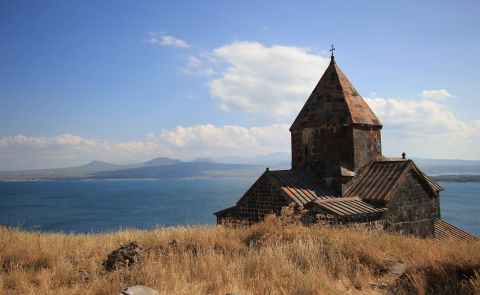
From Neorealism to Neoliberalism: Armenia’s Strategic Pivot in Foreign Policy After the Nagorno-Karabakh Conflict
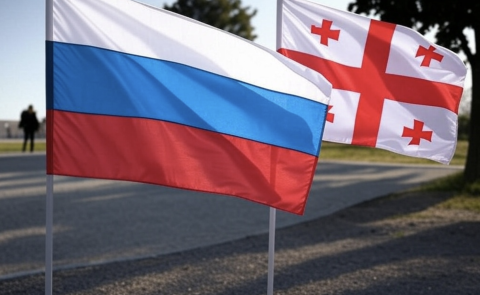
Georgia and Russia: New Turn in Bilateral Relations
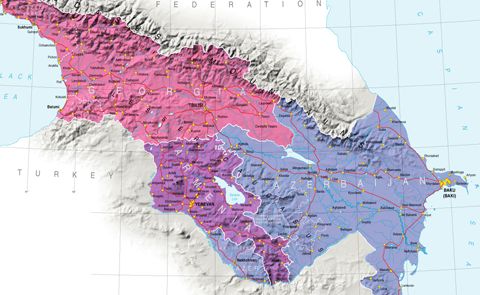
3+3 Initiative as a New Order in the South Caucasus
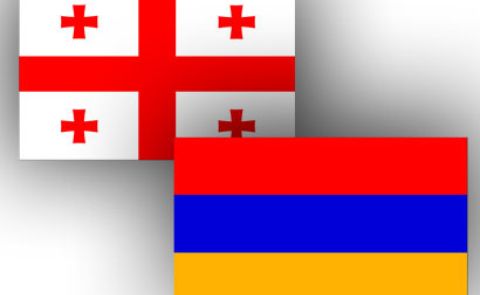
Economic Cooperation Between Armenia and Georgia: Potential and Challenges Ahead
